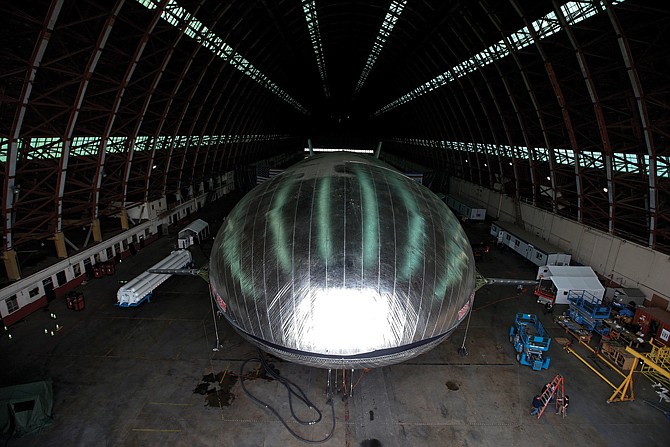TUSTIN, Calif. (AP) - A $35 million lighter-than-air dirigible was damaged and leaked helium Monday when part of a hangar roof collapsed at a former military base, authorities said.
The partial collapse was reported just after 7:45 a.m. at one of the World War II-era blimp hangars on the grounds of the former Marine Corps Air Station, said Capt. Steve Concialdi of the Orange County Fire Authority.
"There's a giant hole in the roof," he said.
Hazardous-material crews were called to stop the helium leak.
The cause of the collapse was not known, but debris was believed to have fallen on the experimental airship, which is more than 200 feet long.
The dirigible is a test model being developed by Worldwide Aeros, which says it will be capable of carrying 66 tons of cargo.
No one was injured.
Company spokesman John Kiehle said an initial assessment shows the damage is repairable.
He wasn't able to provide details on the extent of the damage, or why the roof on the hanger collapsed. It's more than 60 years old.
"We are grateful nobody was injured," he said.
He said the company has been testing the model since January.
The Department of Defense and NASA have invested $35 million in the prototype because of its potential to one day carry more cargo than any other aircraft to disaster zones and military bases.
The company says the cargo airship's potential to carry more cargo more efficiently than ever before would provide the U.S. military with an advantage on the battlefield and greater capacity to save more lives during natural disasters.
The lighter-than-air vehicle is not a blimp because it has a rigid structure made out of ultra-light carbon fiber and aluminum underneath its high-tech Mylar skin. Inside, balloons hold the helium that gives the vehicle lift. Unlike hydrogen, the gas used in the Hindenburg airship that crashed in 1937, helium is not flammable.
The airship can take off vertically, like a helicopter, then change its buoyancy to become heavier than air for landing and unloading.

